Lumber Prices Are Volatile — SIPs Slash Costs and Risk
Lumber tariffs driving up costs? SIPs cut lumber use by up to 80%, lower labor needs, and deliver stronger, faster, more..
Cost modeling is a critical aspect of any construction project. However, for high-performance builders looking to create sustainable, energy-efficient, and innovative structures, cost modeling takes on a whole new level of complexity.
In this article, we'll explore the top considerations that high-performance builders should keep in mind when it comes to cost modeling, drawing insights from Sam Rashkin, the creator of the “Energy Star” program, author of "Housing 2.0," and a leading expert in the field.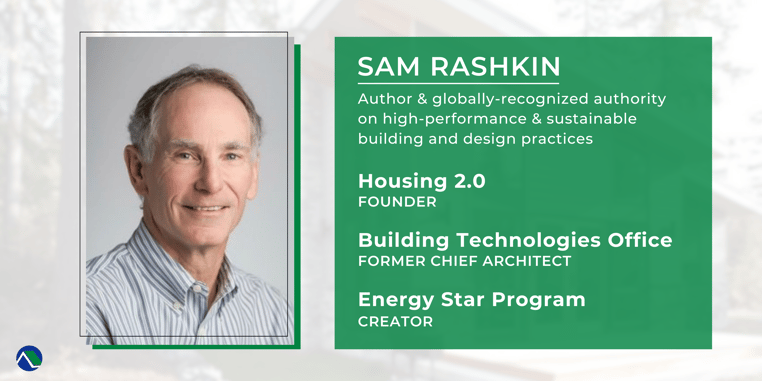
Sustainability is at the forefront of today's construction industry. High-performance builders must align their cost-modeling efforts with sustainable goals and prioritize energy efficiency to lower operational costs and reduce environmental impact.
Rashkin emphasizes the importance of integrating sustainability into cost modeling to ensure long-term environmental and financial benefits such as tax incentives, construction time cycle savings, and operational savings. This involves considering sustainable features like energy-efficient HVAC systems, renewable energy sources, and eco-friendly materials.
He also suggests optimizing building performance through meticulous design and advanced technologies. This includes considering passive design principles like building envelope systems with efficient insulation and high-performance windows.
Incorporating energy-efficient features significantly enhances a building's energy performance and contributes to cost savings over time. By incorporating these elements, builders can create structures that are more durable, efficient, and high-performing, increasing the building's value and leaving a positive environmental footprint.
The following high-performance building considerations can reduce operating costs, increase a building's value, and have a positive ecological impact.
In the realm of high-performance building and energy conservation, the building envelope system assembly reigns supreme. It's the linchpin between the interior and exterior, governing heat flow and energy efficiency.
While insulation and windows are a critical part of the building envelope, the additional materials that make up the full building envelope (building shell) are critical contributions to energy efficiency and making the insulation and windows perform optimally.
Framing choices can directly decrease or increase energy efficiency because of unseen heat/energy transfer, also known as thermal bridging.
A well-designed envelope, encompassing walls, roofs, windows, and doors, thwarts heat transfer and air leakage, yielding substantial energy savings. The choice of envelope profoundly impacts construction speed, waste generation, and durability. 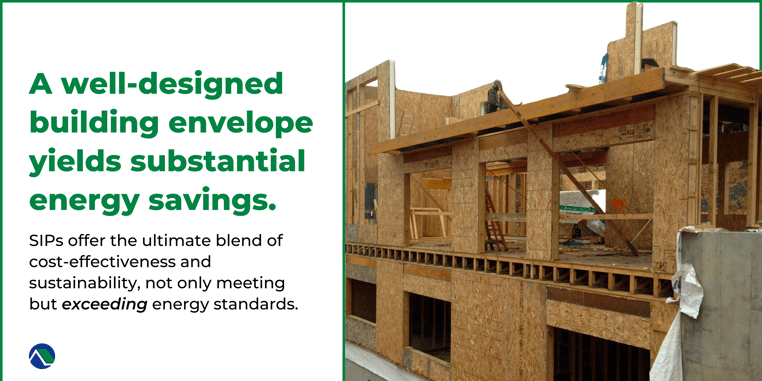
Among envelope options, structural insulated panels (SIPs) emerge as the ultimate blend of cost-effectiveness and sustainability. By choosing the right envelope, high-performance builders craft structures that not only meet but exceed energy standards, benefiting both the environment and the bottom line.
Selecting the right materials is crucial for cost modeling in high-performance buildings. Rashkin encourages builders to choose materials that strike a balance between sustainability and cost-effectiveness. This might involve opting for locally sourced, recycled, or low-impact materials. 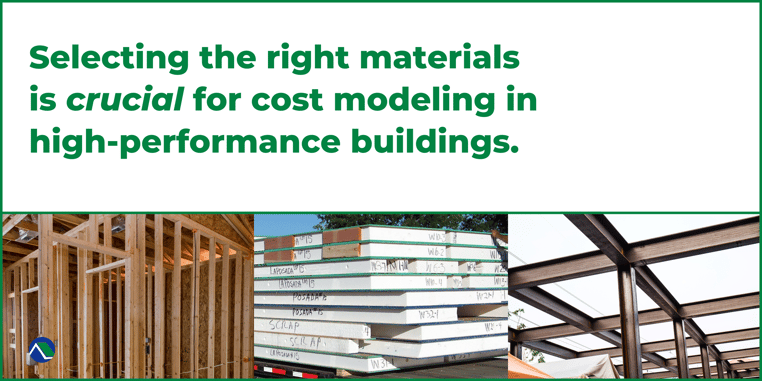
Choosing construction materials made from recycled or sustainable sources not only reduces environmental impact but can also lead to lower material costs. Examples include reclaimed wood, recycled metal, and sustainable flooring options.
Careful material selection not only reduces environmental impact but also helps control construction costs while ensuring durability and performance.
High-performance builders are early adopters of innovative construction techniques.
Rashkin highlights the advantages of incorporating advanced methods, such as modular and offsite construction or 3D printing, into cost modeling. These approaches can lead to faster project completion, reduced labor costs, improved quality control, and a major reduction in callbacks. 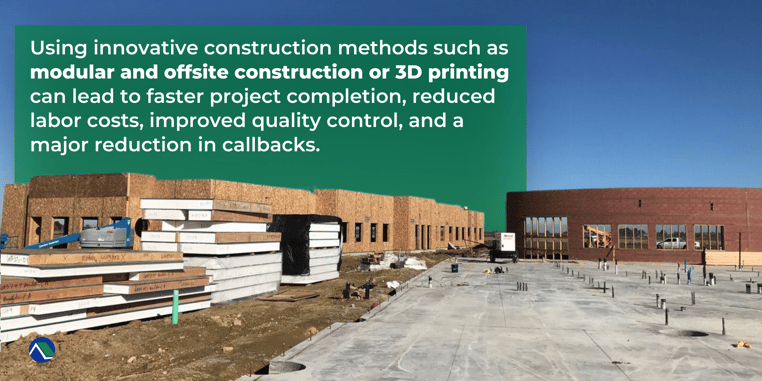
By staying open to new technologies and construction processes (such as offsite and panelized construction), builders can enhance efficiency and competitiveness in a challenging market.
Uncover our considerations for different systems and material selections for offsite construction time and budget savings.
Rashkin emphasizes the importance of conducting lifecycle cost analysis during cost modeling. This involves evaluating the total cost of ownership over a building's lifespan, including maintenance, energy, and operational expenses. 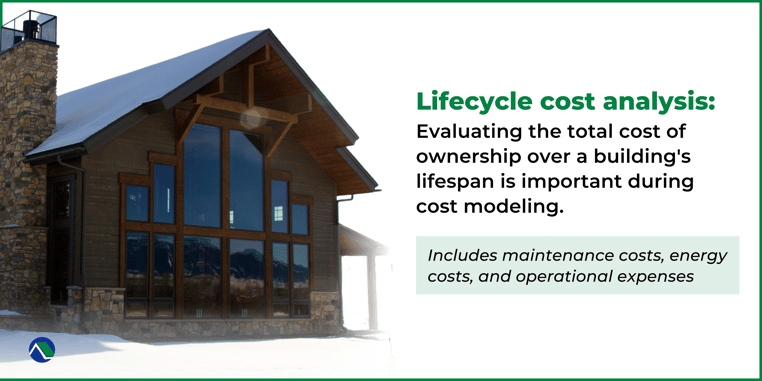
By considering long-term cost implications, builders can make informed decisions that prioritize sustainability and cost-efficiency to use as a differentiator for potential clients.
High-performance builders must stay informed about building codes and regulations. Rashkin recommends actively seeking out incentives and rebates that promote sustainability and energy efficiency. These incentives can offset initial investments in high-performance features and lead to significant long-term savings.
Data plays a crucial role in cost modeling for high-performance builders. Rashkin suggests using data to make informed decisions throughout the construction process. This includes leveraging tools and software for energy modeling, cost projections, and performance analysis.
Data-driven decision-making can lead to more accurate cost estimates and better project outcomes.
Every construction project carries inherent risks. Rashkin advises high-performance builders to identify and mitigate potential risks in their cost-modeling efforts. This includes assessing risks related to sustainable features, materials, and innovative construction methods.
By proactively addressing risks, builders can ensure smoother project execution and minimize unexpected costs.
In conclusion, cost modeling for high-performance builders involves a comprehensive approach that dives into education and preplanning to consider sustainability, energy efficiency, material choice, construction methods, data, and risk mitigation. 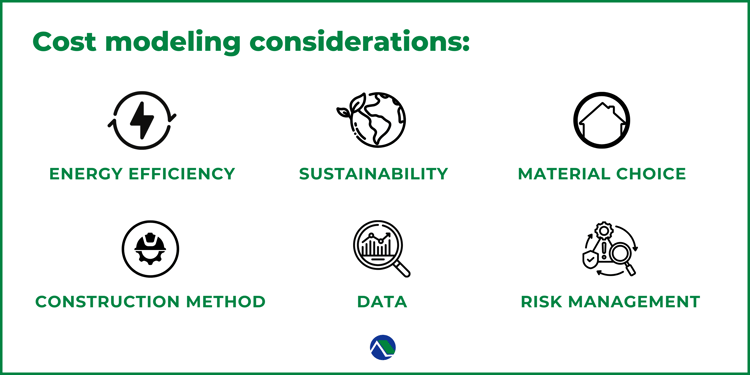
Following Sam Rashkin's insights, builders can create not only cost-effective structures but also environmentally responsible and future-proof buildings that benefit both the bottom line and the planet.
As the construction industry continues to evolve, embracing these considerations is essential for success in the high-performance building sector.
Sam Rashkin is undeniably a recognized authority in the realm of building design and construction, particularly when it comes to his commitment to advancing high-performance and sustainable building and design practices — on a global level.
With extensive experience spanning both the public and private sectors, including a significant role as the Chief Architect for the U.S. Department of Energy's Building Technologies Office and the creator of the “Energy Star” program, Rashkin possesses an in-depth comprehension of the AEC industry's intricacies.
Furthermore, his influential authorship of pivotal books such as "Retooling the U.S. Housing Industry" and "Housing 2.0" imparts invaluable insights and practical guidance on sustainable building. 
His fervent advocacy for Zero Energy Ready Homes, designed to achieve net-zero energy consumption, showcases his dedication to transformative sustainability.
Rashkin's trailblazing work has earned him recognition, accolades, and awards from diverse sectors, solidifying his status as a globally renowned expert in sustainable building and energy efficiency.
Lumber tariffs driving up costs? SIPs cut lumber use by up to 80%, lower labor needs, and deliver stronger, faster, more..
Learn what’s changing—and what’s not—with energy tax credits for SIP projects. Get the latest updates on 25D, 45L, 179D, and..
Plan smarter, build better. Discover how SIPs and sharp preconstruction planning help tackle today’s construction..
High-performance buildings start with better systems.
Premier SIPS deliver a building envelope that outperforms traditional framing in efficiency, strength, and long-term durability. If your project demands higher performance and greater predictability, let’s talk.